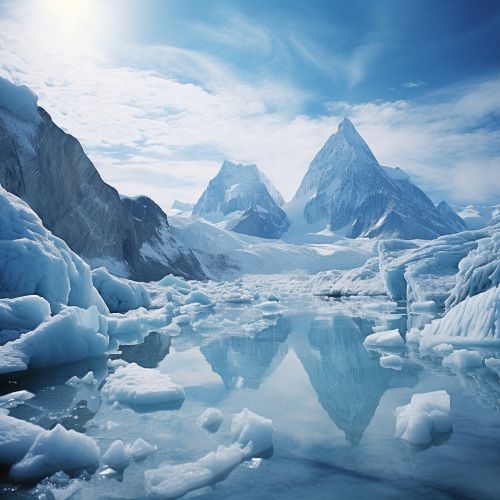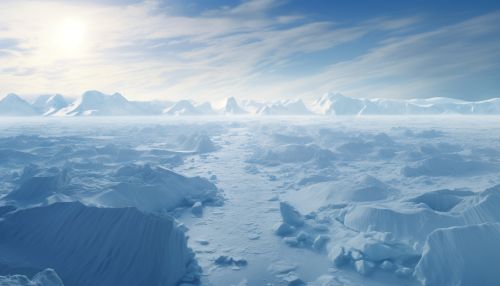Glacial ice
Introduction
Glacial ice is a type of ice that is formed from the accumulation and compaction of snow on mountains or near the poles. Over time, the snow transforms into dense, blue ice that can flow like a very slow river under its own weight. This process is known as glaciation.
Formation
The formation of glacial ice begins with the accumulation of snow in areas where the temperature remains below freezing throughout the year. This is typically in high altitude or high latitude regions. The snow that falls in these areas does not melt, but instead accumulates over time. As the snow accumulates, the weight of the new snow compresses the older snow beneath it, causing it to re-crystallize and form a type of ice known as firn. Over time, the firn further compacts and eventually turns into glacial ice.


Structure
Glacial ice is not a uniform substance, but rather a complex structure composed of ice, air, water, and various impurities. The ice in a glacier is not pure, but contains small amounts of dissolved gases and particulate matter. These impurities can greatly affect the physical properties of the ice, including its color, density, and melting point.
Movement
Glaciers move under the force of gravity. The movement of a glacier is determined by its size, shape, and the slope of the terrain over which it flows. Glaciers can move at varying speeds, from a few centimeters per day to several meters per day. This movement is known as glacial motion.
Types of Glaciers
There are several types of glaciers, including valley glaciers, ice caps, ice sheets, and ice shelves. Each type of glacier has unique characteristics and forms in specific geographic locations.
Glacial Erosion
Glaciers are powerful agents of erosion. As they move, they pick up rocks and other debris from the ground. This material is then carried along with the glacier and can be deposited elsewhere when the glacier melts. This process is known as glacial deposition.
Glacial ice and Climate Change
Glacial ice plays a significant role in the global climate system. Changes in the volume of glacial ice can affect sea level, ocean circulation, and the overall temperature of the Earth's atmosphere. Therefore, studying glacial ice is crucial for understanding climate change.
